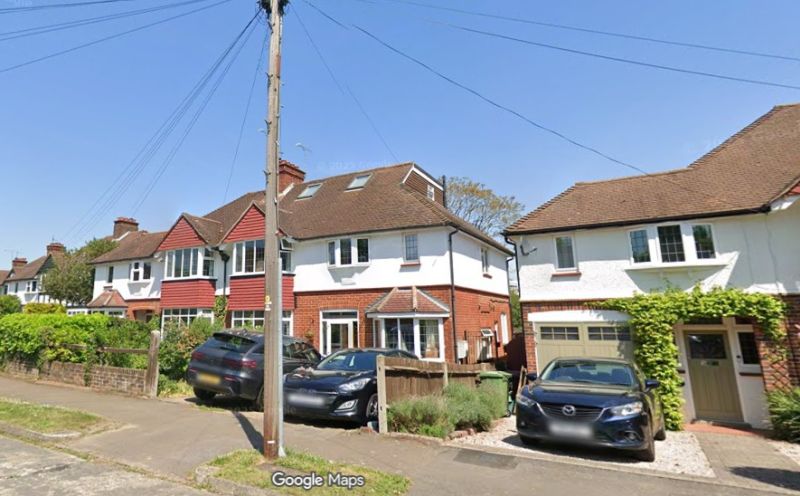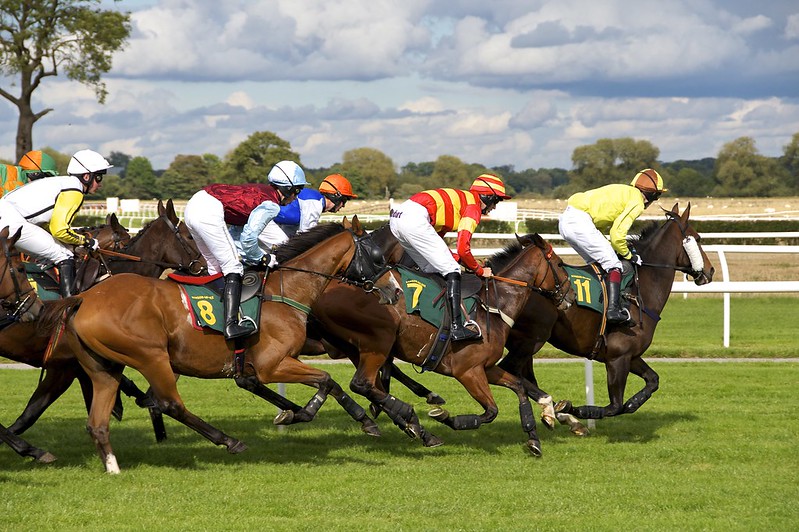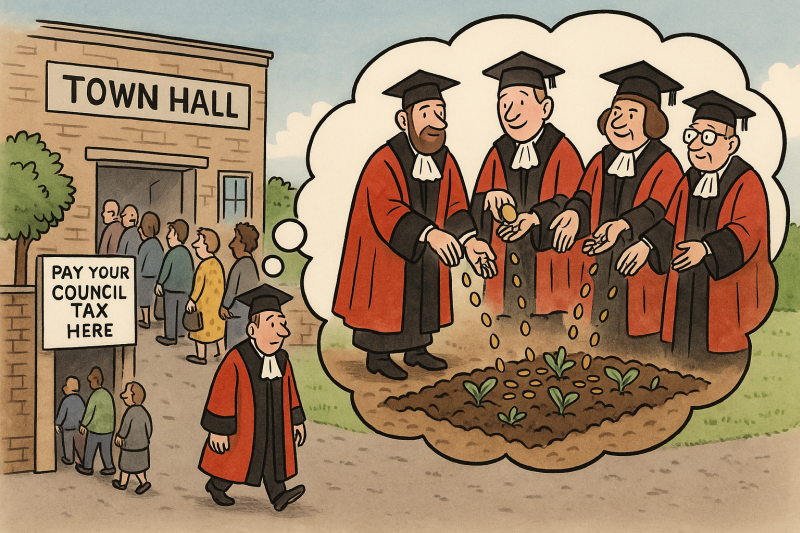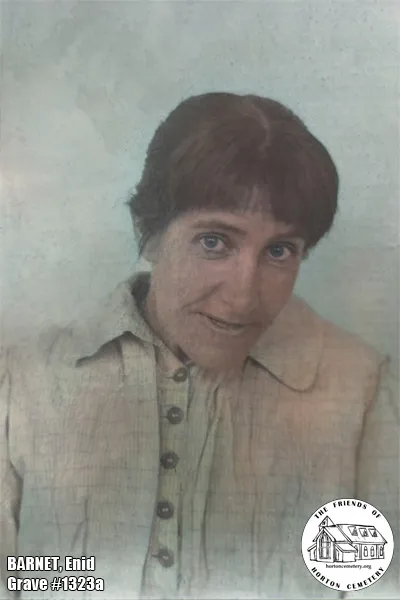Another Horton Cemetery Life Story
How does the daughter of a famous Government Architect, who shaped the landscape of New South Wales, Australia, end up buried in an unmarked grave in Epsom? Her UK asylum records indicate a birth date of 1865/6 which has been proven to be incorrect.
Story and images reprinted by permission of The Friends of Horton Cemetery. You can read many more fascinating accounts of the lives of those buried there at www.hortoncemetery.org
Enid Barnet was born 23rd March 1861, in Glebe, an inner-western suburb of Sydney, Australia, in the shadow of Sydney harbour. She was the fourth child of what would become a brood of 8, born into a very influential family.
The factual link which ensures we have the right person, is an asylum visitor log entry from her brother, the Rev. Donald McKay Barnet.
Enid’s Father
Enid’s father was James Johnstone Barnet, born in 1827 in Arbroath, Scotland. On 22 July 1854 he married Amy Gosling, daughter of John and Elizabeth Gosling; they sailed for Sydney and arrived in December. In 1860 he joined the Colonial Architect’s Office; two years later he became its acting head and in 1865 colonial architect; he held the position until 1890 when the office was reorganized.

His major works include the General Post Office building in Sydney, Callan Park Lunatic Asylum, the Australian Museum, the Colonial Secretary’s building, Lands Department building, and the Anderson Stuart Building at Sydney University.
After 24 years’ continuous public service, in 1885, James was granted 12 month’s leave from his duties to embark on a trip to Europe. Barnet toured Venice with his wife and visited the continent’s major art centres. He also performed some duties in relation to his work. This included inspecting the Criminal Lunatic Asylum in Broadmoor, England. Barnet returned to Sydney just before Christmas 1885.
In 1899 he published Architectural Work in Sydney, New South Wales, 1788-1899.
Barnet died on 16 December 1904 and was buried in the Presbyterian section at Rookwood cemetery where his wife had been interred ~1890. He was survived by four daughters and three sons. There are many sites dedicated to James Barnet, if you wish to read more.
Enid’s Life?
Very little can be found beyond birth for Enid until she comes to the asylum. We know that the family lived a healthy life in Sydney, and Enid’s sister is mentioned laying the foundation stone for Macquarie lighthouse, but little else can be found.
James and Amy Barnet settled in Glebe, firstly in Christie St where their eldest child Amy was born in 1856. She was followed by four more daughters and a son born on Glebe Rd: Lilia (1858-1928), Rosa (1859- 1940), Enid (born 1861), Maud (1862–1949) and James Jnr. (1865-1932). In 1867 the family moved to Braeside, a house that John designed. Two more sons were born: Thomas (1867-1931) and Donald McKay (1869-1940). James Jnr and Thomas followed their father’s profession, while Donald became a clergyman. They had many pets including a magpie, an Italian greyhound, a Skye terrier and a kangaroo.
We know that her father visited Europe for work and pleasure and can assume that the children accompanied him on at least some of those trips, although no immigration or ships roster can be found for the family. At some point in the 1890s Enid was in England, where she was to remain living with a family friend until being admitted to an asylum.
Enter a life at the Asylum
On Thursday, 27th February 1896, Enid Barnet was admitted to the Constance Road workhouse in the Parish of St. Giles, Camberwell, “Alleged Insane”. The workhouse was a frequent halfway house where people would receive a doctor’s examination before being put to work or in Enid’s case, being discharged to Fisherton House Asylum just 7 days later (1896 was a leap year).

The records show Enid was admitted to Fisherton on 4th March 1896, where she spent 3.5 years, before being discharged “Not Improved” in October.

Further records show that Enid was received at Horton asylum on 18th October 1899, where she was to spend the rest of her life.

Her admission entry shows the 33yr old Enid admitted as a single woman with no occupation, by her friend, Mrs. Barnes (also shown on visitor book), of 10 Colwell Road, E. Dulwich. This address is listed as her previous address, so they were living together. It states that her first attack was at aged 20.
She is rambling & incoherent in her statements, full of delusions as to where she is and the identity of those about her, says “I am the Prince of Wales”, says her occupation is to grow Tea in a teapot like a Chinaman. She hears voices and answers them
Fact indicating insanity observed [on admission]
Rambling garrulous and delusional. Mutters in an incoherent manner to herself. Says she is King & Queen of England, Empress of Russia and Queen of China.
Mental State: A. Rotherham
Enid’s Manor case notes begin on Jan 14th, 1900, and note typical delusional behaviour, talking to herself, laughing and giggling, childish behaviour, and hearing voices. Each entry appears to be approx. quarterly, thus 11 years of notes only span 2 pages. In 1903 it is noted that the patient is very much worse with phthisis and was transferred to the infirmary. Most quarterly examination notes generally consist of a very brief sentence moving from a noisy, delusional, patient progressing to someone who is more vacant, dull, weak-minded and in poor health.
On 3rd December 1911 Enid suddenly collapsed and her pulse became feeble, and it is noted that her previous phthisis which became quiescent in 1906 has made a return. After becoming ever feebler on 10th December, she received 3 injections of 5 minims of Strychnine, a lethal poison used historically in small doses to strengthen muscle contractions, such as a heart and bowel stimulant and as a performance-enhancing drug. Enid died shortly after at 12:05AM.
The statement of death sent to coroner states that the cause of death is (1) Pulmonary Tuberculosis and (2) Fatty degeneration of heart. The document notes “fading bruises on forehead and under each eye, the result of an accidental fall on the 24th of Nov, Patient caught her foot in dress whilst undressing.”
The Manor Address Book Female #1 [6282-13-56] shows that Enid, case 437, did receive two visitors in January and July 1900 just after admittance. One was Mrs Emma Barnes, listed as a friend, whom she was living with at the time of being admitted. The other was her youngest sibling, the Rev. Donald McKay Barnet, visited in 1900 just after her admittance but never returned to the asylum, he also lived in Australia.

- 18.1.00, 28.1.03 – Friend, Mrs Emma Barnes, 207 Lordship Lane, E. Dulwich
- 11.7.00, 14.7.00 – Brother, Rev. Donald McKay Barnet, 10 Guildford St. Russel Sq. WC (Letter returned “Not Known”)
- 5.12.11 – The Clerk, Hammersmith Guardians, 206 Goldhawk Rd. Shepherds Bush
- 8.12.11 – Cousin, J. Barnes, The Glen, Cudham Rd., Tatsfield, Surrey.
Enid received a visit from a local cousin just two days before she died, and 3 days after a visit from the Hammersmith guardians. Did the asylum attempt to reach Enid’s brother but having the letter returned (he had returned to Australia), contact the guardians? Did they also try to contact the only other visitor she ever received, as the cousin shares the same surname. It is comforting to know that she at least had someone at the end.
Enid died on 10th December 1911 and remains buried in unmarked plot #1323a.
Author’s Thoughts
Enid appears to have suffered with her mental health from a young age. It would appear that she was left in England with a friend of the family, Emma Barnes, who may or may not be related to the J. Barnes (cousin) who visited her in her last moments. Could it be that her famous father couldn’t deal with the pressures of having a mentally ill daughter around in his influential circles.
According to Enid’s file her illness began around 1881, did this influence her father? Colonial Architect James Barnett designed the new Callan Park Lunatic Asylum, in New South Wales, to be built according to the enlightened views of the American Dr Thomas Kirkbride. The date certainly fits with Enid’s diagnosis. James worked in collaboration with Inspector of the Insane Dr Frederick Norton Manning to produce a group of some twenty neo-classical buildings, completing in 1885 and subsequently named the Kirkbride Block, offering progressive patient care.
Author: Steve Johnson














